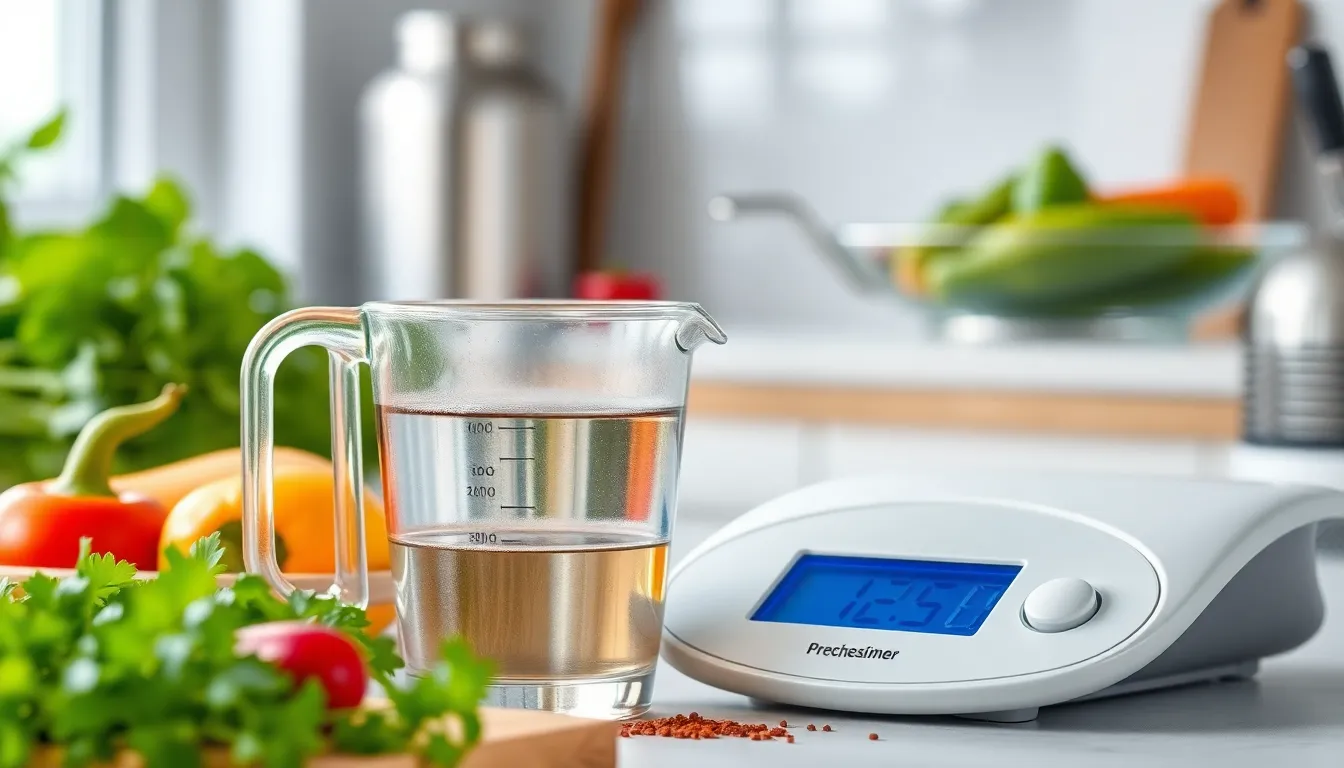When it comes to converting measurements, understanding the relationship between pounds and liters can be crucial for various applications. Whether cooking, shipping, or engaging in scientific research, knowing how many pounds are in a liter helps ensure accuracy and efficiency.
This conversion often confuses many, as liters measure volume while pounds measure weight. The specific weight of a liter can vary based on the substance being measured, making it essential to grasp the basics of density. In this article, readers will discover the key factors influencing this conversion and learn how to make accurate calculations for different materials.
Table of Contents
ToggleUnderstanding Volume and Weight
Understanding the distinction between volume and weight is crucial for accurate conversions. Volume measures the space occupied by a substance, expressed in liters. Weight quantifies the heaviness, measured in pounds. The relationship between the two depends largely on the material’s density.
Density defines how mass relates to volume. Different materials possess varying densities. For example, water has a density of approximately 1 kilogram per liter, translating to about 2.2 pounds per liter. Conversely, oils and gases have lower densities, affecting their weight differently.
Key Factors Influencing Conversion
- Material Type: Different substances convert differently due to variances in density.
- Temperature: Temperature affects density. For example, heating substances usually decreases density.
- Purity: Impurities can alter a material’s density, impacting weight-to-volume conversions.
Practical Application
Converting between pounds and liters becomes practical with these factors in mind. For specific substances, using density values facilitates accurate calculations. For instance, knowing that a substance has a density of 0.8 grams per milliliter allows for quick conversions:
- 1 liter of this substance = 0.8 kg = 1.76 pounds.
Using standard conversion formulas enhances accuracy. Converters available online also simplify the process.
Pounds to Liters Conversion

Understanding the conversion from pounds to liters involves recognizing how weight and volume relate through density. Various factors, including the type of material, affect these conversions.
Why Conversion Matters
Conversion between pounds and liters proves vital in many scenarios. Precision in measurement ensures accurate cooking and baking, where ingredient quantities directly influence results. In shipping, proper conversion helps avoid excess costs and ensures compliance with regulations. Scientific research often requires accurate data for experiments, making conversion accuracy essential.
Common Applications
Numerous fields utilize pounds to liters conversion:
- Culinary Arts: Recipes require accurate measurements; chefs adjust ingredients based on volume and weight conversions.
- Shipping and Logistics: Companies determine shipping costs based on weight, influencing packaging and pricing strategies.
- Laboratories: Chemists convert between weight and volume to ensure proper formulation of solutions and chemical reactions.
- Agriculture: Farmers measure liquid fertilizers or pesticides in liters while weighing them in pounds for accurate application rates.
- Food and Beverage Industry: Manufacturers monitor product consistency and quality by converting measurements during production.
Each application highlights the significance of accurate conversion, supporting efficiency and quality across various sectors.
How Many Pounds in a Liter
Understanding the conversion between pounds and liters is vital, especially in contexts involving liquids. The relationship hinges on the substance’s density, which varies significantly among different materials.
Water as a Reference
Water serves as a common reference point for converting liters to pounds. Water has a density of approximately 1 kilogram per liter, equating to about 2.2 pounds per liter at standard temperature and pressure. This consistent density allows for straightforward conversion when measuring water. For instance, 5 liters of water weigh about 11 pounds since multiplying 2.2 pounds by 5 gives 11 pounds. This reference point aids in estimating the weight of various liquids by comparing their densities to that of water.
Conversion for Other Liquids
Other liquids exhibit varying densities, resulting in different conversions from liters to pounds. For instance, oils generally have a density of around 0.9 grams per milliliter, translating to about 1.98 pounds per liter. Consequently, 3 liters of olive oil weighs approximately 5.94 pounds. Conversely, liquids like mercury possess a much higher density of approximately 13.6 grams per milliliter. Therefore, 1 liter of mercury weighs about 29.76 pounds, indicating the considerable weight difference compared to water. Utilizing the specific density of each liquid leads to accurate conversions, facilitating precise calculations in culinary, scientific, and industrial applications.
Factors Affecting Weight
Several factors influence the weight of a substance when converting liters to pounds. Understanding these factors ensures accurate measurements across various applications.
Type of Material
Type of material significantly affects weight. Different substances possess unique densities, which directly impact weight per liter. For instance, liquids like water and oils have differing densities, resulting in variations in weight when measured in liters.
Temperature
Temperature can alter the density of a substance. As temperature increases, many liquids expand, decreasing their density. This density change influences the weight calculation. For example, colder water has a density of approximately 1 kilogram per liter, while warmer water may weigh slightly less per liter due to expansion.
Purity
Purity levels of a substance also contribute to weight differences. Impurities can change the density of a material. For example, a liter of pure olive oil may weigh about 1.98 pounds, but oil mixed with other substances may weigh less due to diluted density.
Pressure
Pressure impacts the volume and density of gases. Under higher pressure, gases occupy less volume, resulting in increased density. This change affects weight calculations for gases significantly compared to liquids and solids. Understanding gas behavior under various pressures ensures accurate conversions.
Composition
Composition further influences the density and weight of materials. For instance, solutions with varying concentrations showcase different weights for the same volume. A solution containing 100 grams of salt in a liter of water will differ in density and thus weight from pure water.
Accurate measurements depend on considering these factors, as they ensure reliable conversions between liters and pounds.
Understanding the conversion between pounds and liters is vital for accuracy in various fields. Whether in cooking shipping or scientific research precise measurements can significantly impact outcomes. By recognizing the role of density and the factors that influence it readers can make informed calculations tailored to specific materials.
This knowledge not only enhances efficiency but also improves the quality of results across different applications. Utilizing standard formulas and online converters further streamlines the conversion process ensuring reliable outcomes every time. As the importance of accurate measurements continues to grow in diverse sectors mastering these conversions becomes indispensable.


